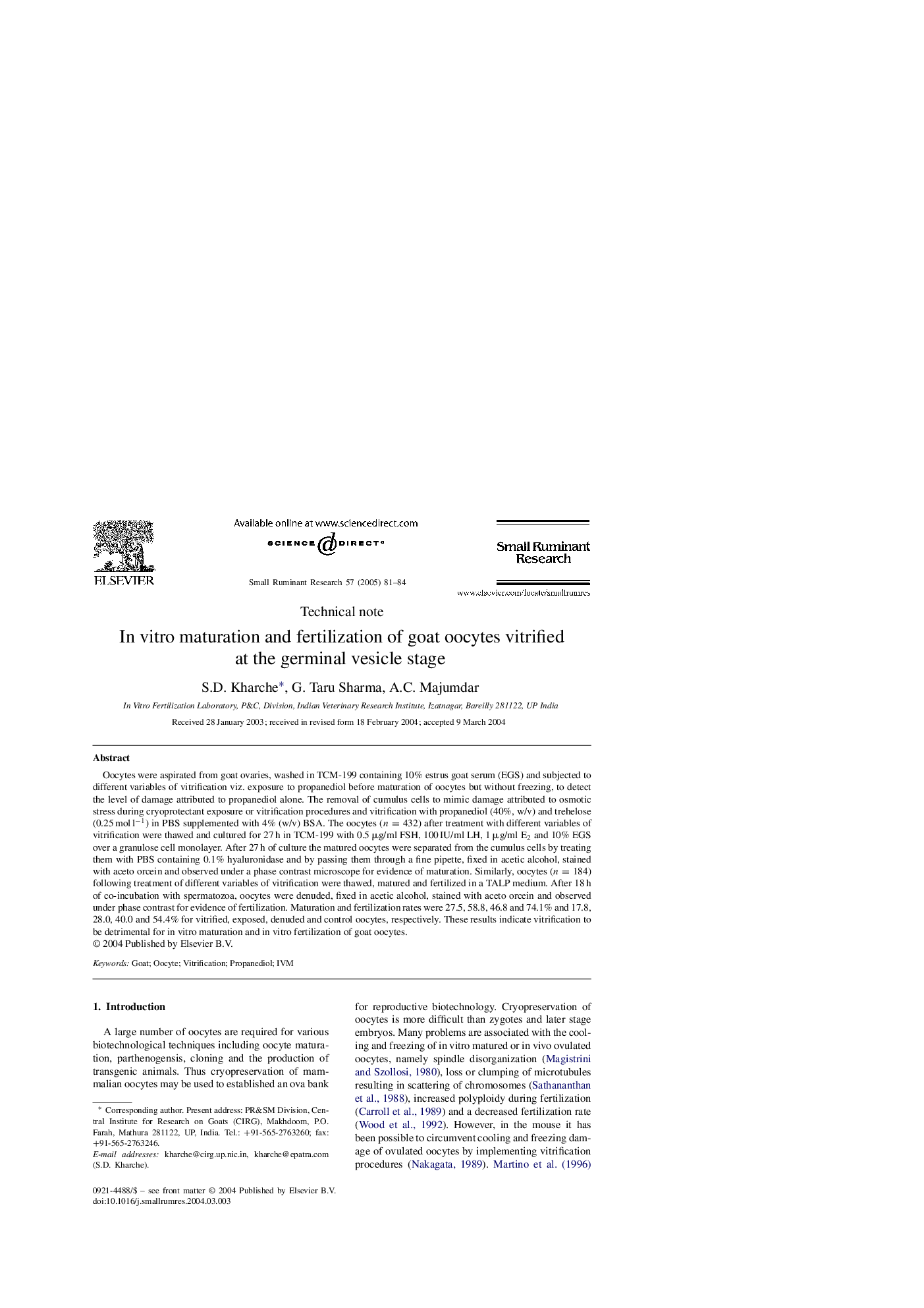| Article ID | Journal | Published Year | Pages | File Type |
|---|---|---|---|---|
| 8986759 | Small Ruminant Research | 2005 | 4 Pages |
Abstract
Oocytes were aspirated from goat ovaries, washed in TCM-199 containing 10% estrus goat serum (EGS) and subjected to different variables of vitrification viz. exposure to propanediol before maturation of oocytes but without freezing, to detect the level of damage attributed to propanediol alone. The removal of cumulus cells to mimic damage attributed to osmotic stress during cryoprotectant exposure or vitrification procedures and vitrification with propanediol (40%, w/v) and trehelose (0.25 mol lâ1) in PBS supplemented with 4% (w/v) BSA. The oocytes (n=432) after treatment with different variables of vitrification were thawed and cultured for 27 h in TCM-199 with 0.5 μg/ml FSH, 100 IU/ml LH, 1 μg/ml E2 and 10% EGS over a granulose cell monolayer. After 27 h of culture the matured oocytes were separated from the cumulus cells by treating them with PBS containing 0.1% hyaluronidase and by passing them through a fine pipette, fixed in acetic alcohol, stained with aceto orcein and observed under a phase contrast microscope for evidence of maturation. Similarly, oocytes (n=184) following treatment of different variables of vitrification were thawed, matured and fertilized in a TALP medium. After 18 h of co-incubation with spermatozoa, oocytes were denuded, fixed in acetic alcohol, stained with aceto orcein and observed under phase contrast for evidence of fertilization. Maturation and fertilization rates were 27.5, 58.8, 46.8 and 74.1% and 17.8, 28.0, 40.0 and 54.4% for vitrified, exposed, denuded and control oocytes, respectively. These results indicate vitrification to be detrimental for in vitro maturation and in vitro fertilization of goat oocytes.
Related Topics
Life Sciences
Agricultural and Biological Sciences
Animal Science and Zoology
Authors
S.D. Kharche, G. Taru Sharma, A.C. Majumdar,
